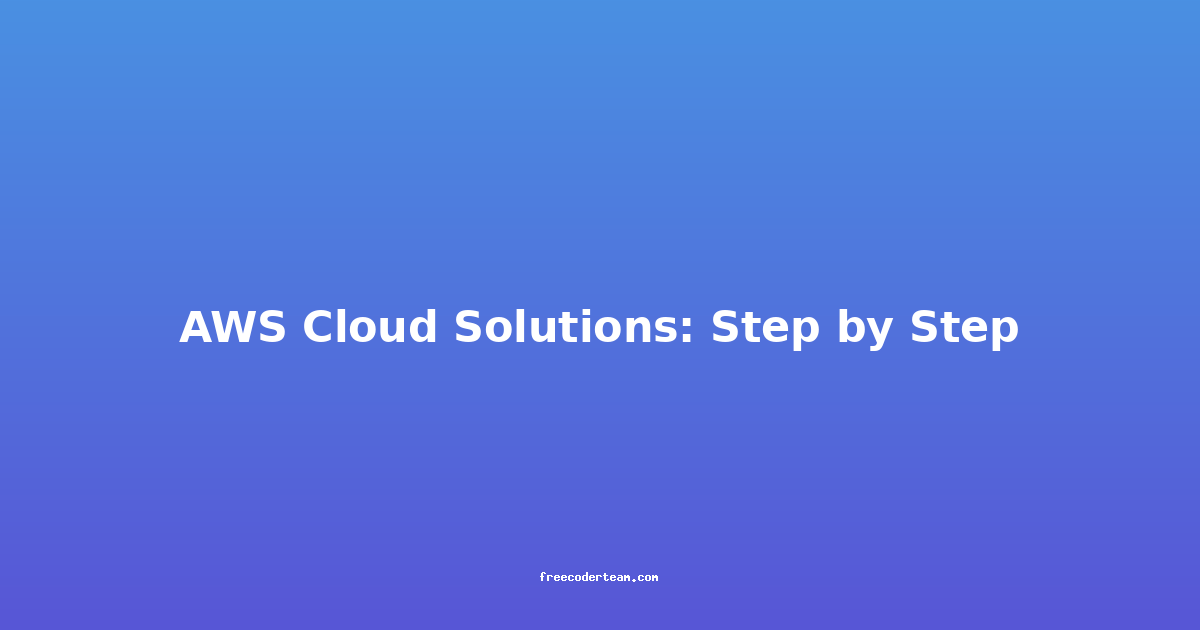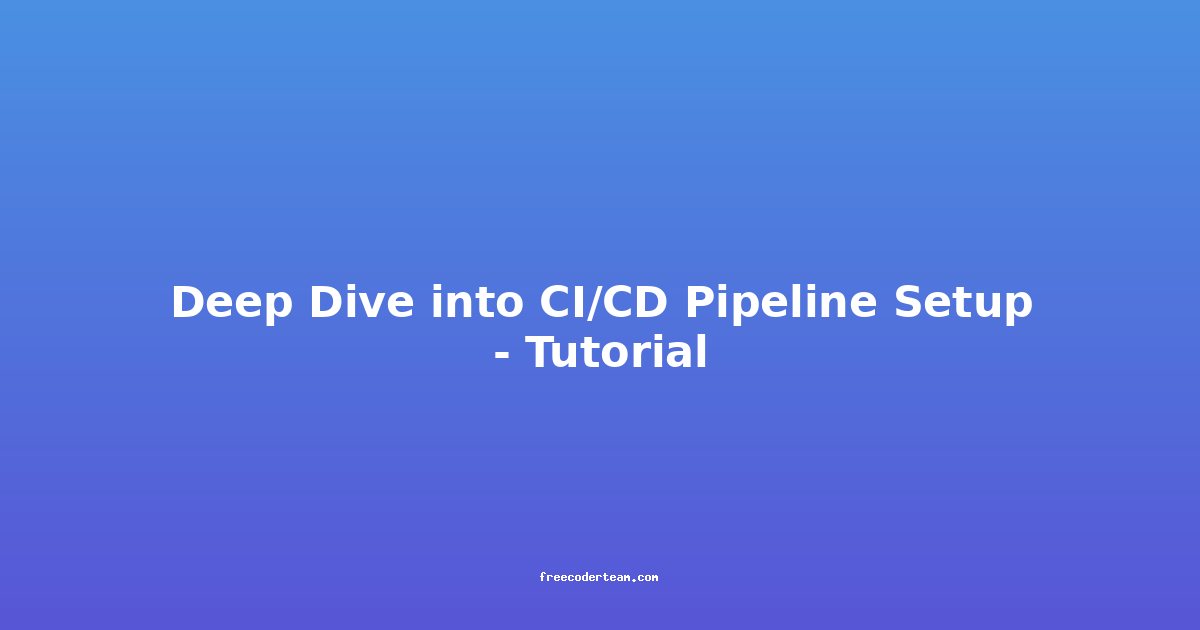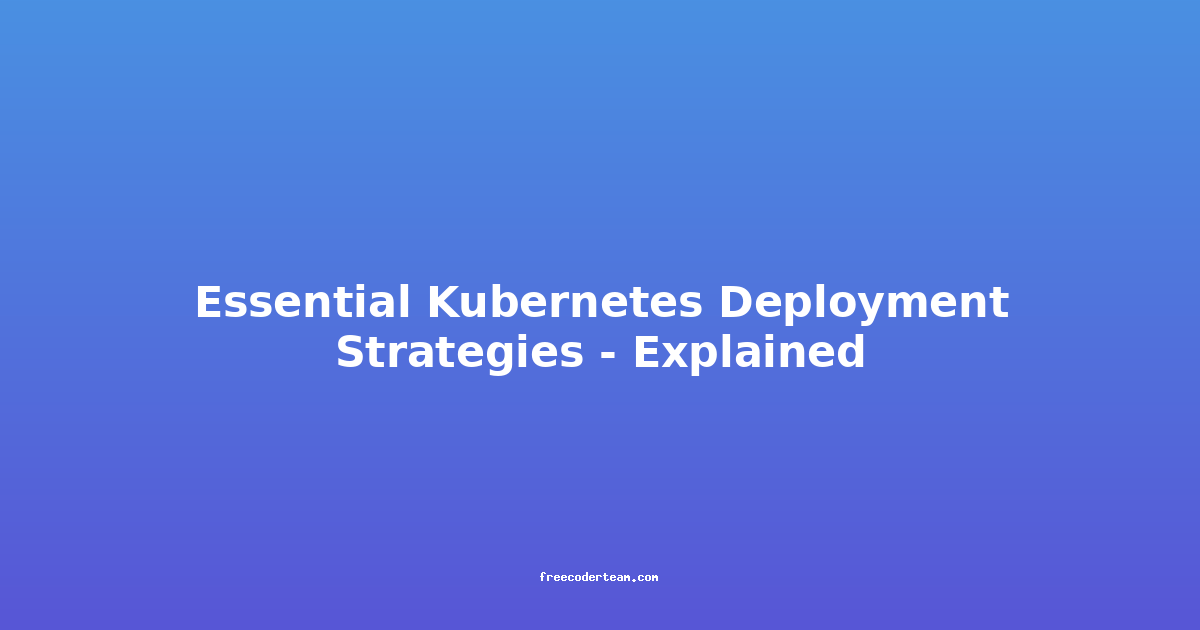Understanding DevOps Automation Tools: Streamlining Your Development Workflow
In today's fast-paced technology landscape, organizations are under constant pressure to deliver software rapidly and reliably. DevOps, a set of practices that combines software development (Dev) and IT operations (Ops), has emerged as a game-changer in achieving this goal. At the heart of DevOps is automation, which helps streamline workflows, reduce human errors, and accelerate time-to-market. This blog post will explore the key DevOps automation tools, provide practical examples, and offer best practices to help you leverage these tools effectively.
Table of Contents
- What is DevOps Automation?
- Key DevOps Automation Tools
- Best Practices for DevOps Automation
- Practical Examples
- Conclusion
What is DevOps Automation?
DevOps automation refers to the use of tools and processes to automate repetitive and manual tasks throughout the software development lifecycle. These tasks include building, testing, deploying, and monitoring applications. By automating these processes, DevOps teams can reduce human intervention, increase efficiency, and ensure consistency across releases.
Automation is a cornerstone of DevOps because it aligns with its core principles: collaboration, continuous integration, continuous delivery (CI/CD), and infrastructure as code (IaC). By automating mundane tasks, teams can focus on innovation and delivering value to customers.
Key DevOps Automation Tools
1. Jenkins
Jenkins is one of the most popular open-source CI/CD tools. It automates the software build, test, and deployment processes, enabling teams to implement continuous integration and continuous delivery pipelines. Jenkins is highly extensible through plugins, making it suitable for a wide range of projects and environments.
Features:
- Pipeline as Code: Jenkins supports defining pipelines using Jenkinsfile, a declarative YAML or Groovy script that describes the build, test, and deployment steps.
- Plugins: A vast ecosystem of plugins for integrating with version control systems (e.g., Git), testing frameworks, and deployment tools.
- Scalability: Jenkins can scale to handle large-scale projects with multiple pipelines.
Example: Jenkins Pipeline for CI/CD
pipeline {
agent any
stages {
stage('Build') {
steps {
echo 'Building the application...'
sh 'mvn clean package'
}
}
stage('Test') {
steps {
echo 'Running tests...'
sh 'mvn test'
}
}
stage('Deploy') {
steps {
echo 'Deploying the application...'
sh 'scp target/app.jar server:/var/app'
}
}
}
}
In this example, Jenkins automates the process of building the application, running tests, and deploying it to a server.
2. GitHub Actions
GitHub Actions is a powerful CI/CD platform integrated seamlessly with GitHub. It allows developers to automate workflows directly within their GitHub repositories. GitHub Actions is particularly popular for its ease of use, integration with GitHub features, and support for a wide range of workflows.
Features:
- Pre-built Actions: A library of pre-built actions for common tasks like building, testing, and deploying applications.
- Workflow Files: Configurable workflows are defined using YAML files, making it easy to version control and share workflows.
- Security: Built-in security features, such as secret management and branch protection rules.
Example: GitHub Actions for CI/CD
name: CI/CD Pipeline
on:
push:
branches:
- main
jobs:
build:
runs-on: ubuntu-latest
steps:
- name: Checkout code
uses: actions/checkout@v2
- name: Set up JDK 11
uses: actions/setup-java@v2
with:
java-version: '11'
- name: Build with Maven
run: mvn clean package
- name: Test
run: mvn test
deploy:
needs: build
runs-on: ubuntu-latest
steps:
- name: Deploy to server
run: |
scp target/app.jar server:/var/app
In this example, GitHub Actions automates the build, test, and deployment process whenever code is pushed to the main branch.
3. Ansible
Ansible is a configuration management and orchestration tool that simplifies the process of automating infrastructure management and application deployment. It uses a declarative approach, allowing teams to define the desired state of their systems in simple YAML files.
Features:
- Declarative: Define the desired state of systems, and Ansible ensures the state is achieved.
- Idempotency: Ansible tasks are idempotent, meaning they can be run multiple times without causing unintended side effects.
- Playbooks: Ansible uses YAML-based playbooks to define automation workflows.
Example: Ansible Playbook for Deploying an Application
---
- name: Deploy Application
hosts: webservers
become: yes
tasks:
- name: Copy application files
copy:
src: ./app.jar
dest: /var/app/app.jar
- name: Restart application
command: systemctl restart app-service
In this example, Ansible automates the process of copying application files to a server and restarting the application service.
4. Terraform
Terraform is an infrastructure as code (IaC) tool that allows teams to define and provision infrastructure using simple configuration files. It supports a wide range of cloud providers, including AWS, Azure, and Google Cloud, and ensures that infrastructure is provisioned consistently and predictably.
Features:
- Provider Support: Supports multiple cloud providers and on-premises infrastructure.
- State Management: Terraform manages infrastructure state, ensuring that changes are reproducible.
- Version Control: Infrastructure configurations can be versioned and tracked in Git.
Example: Terraform for Provisioning an AWS EC2 Instance
provider "aws" {
region = "us-east-1"
}
resource "aws_instance" "example" {
ami = "ami-0c55b159cbfafe1f0"
instance_type = "t2.micro"
tags = {
Name = "example"
}
}
In this example, Terraform automates the provisioning of an EC2 instance in AWS.
5. Docker
Docker is a containerization platform that allows developers to package applications and their dependencies into portable containers. Docker simplifies the development, testing, and deployment of applications by ensuring consistency across environments.
Features:
- Containers: Docker containers provide a lightweight, portable environment for running applications.
- Images: Docker images are reusable templates for building containers.
- Docker Compose: Simplifies the management of multi-container applications.
Example: Dockerfile for Building a Java Application
FROM openjdk:11-jdk-slim
WORKDIR /app
COPY target/app.jar app.jar
ENTRYPOINT ["java", "-jar", "app.jar"]
In this example, Docker automates the process of building and running a Java application in a container.
Best Practices for DevOps Automation
1. Start Small, Scale Gradually
Begin with automating simple tasks, such as building and testing. As you gain confidence, gradually expand automation to include deployment and monitoring.
2. Use Version Control for Automation Scripts
Treat automation scripts (e.g., Jenkinsfiles, Terraform configurations) as code. Version control them using Git to track changes and collaborate effectively.
3. Implement Continuous Integration
Automate the build and test process for every code commit to catch issues early and ensure that the codebase remains in a deployable state.
4. Leverage Infrastructure as Code
Use tools like Terraform to define infrastructure in code, ensuring consistency and reproducibility.
5. Monitor and Optimize
Regularly monitor the performance of automated pipelines and optimize them to reduce execution time and improve reliability.
6. Automate Security and Compliance Checks
Integrate security tools (e.g., Snyk, SonarQube) into your CI/CD pipelines to ensure that your applications are secure and compliant with industry standards.
Practical Examples
Example 1: End-to-End CI/CD Pipeline
Tools Used: Jenkins, Docker, AWS
-
Build and Test:
- Jenkins automatically builds the application and runs tests whenever code is pushed to the repository.
- Docker is used to build container images for the application.
-
Deploy:
- Jenkins deploys the Docker container to an AWS EC2 instance using Terraform to provision the infrastructure.
-
Monitor:
- Prometheus and Grafana are used to monitor the application's performance post-deployment.
Example 2: Infrastructure as Code with Terraform
Tools Used: Terraform, AWS
-
Define Infrastructure:
- Use Terraform to define the infrastructure in HCL (HashiCorp Configuration Language).
- Provision resources like EC2 instances, VPCs, and load balancers.
-
Version Control:
- Store Terraform configuration files in Git for version control and collaboration.
-
Automate Updates:
- Automate infrastructure updates using CI/CD pipelines (e.g., GitHub Actions) to ensure consistency.
Conclusion
DevOps automation tools are essential for modern software development teams looking to deliver high-quality software rapidly and reliably. Tools like Jenkins, GitHub Actions, Ansible, Terraform, and Docker empower teams to automate repetitive tasks, streamline workflows, and focus on innovation.
By following best practices and leveraging these tools effectively, organizations can achieve continuous integration, continuous delivery, and infrastructure as code, ultimately delivering better products to their customers. Start small, automate key processes, and continuously optimize your workflows to unlock the full potential of DevOps automation.
By understanding and implementing these tools and practices, your team can transform its development process and stay competitive in the ever-evolving tech landscape. Happy automating! 🚀
Note: Always ensure compliance with security and privacy regulations when automating processes.




